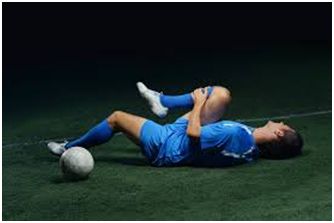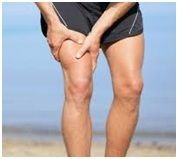Sports Injury
Playing sport and doing regular exercise is good for your health, but can sometimes result in injuries. The term “sports injury,” in the broadest sense, refers to the kinds of injuries that most commonly occur during sports or exercise. Some sports injuries result from accidents; others are due to poor training practices, improper equipment, lack of conditioning, or insufficient warm-up and stretching.
Although virtually any part of your body can be injured during sports or exercise, the term is typically reserved for injuries that involve the musculoskeletal system, which includes the muscles, bones, and associated tissues like cartilage. The ankles and knees are some of the most commonly affected areas.

Common Types of Sports Injuries
- Muscle sprains and strains
- Tears of the ligaments that hold joints together
- Tears of the tendons that support joints and allow them to move
- Dislocated joints
- Fractured bones, including vertebrae.

Symptoms
Acute and Chronic Sports Injuries
Regardless of the specific structure affected, sports injuries can generally be classified in one of two ways: acute or chronic.
Acute Injuries
Acute injuries, such as a sprained ankle, strained back or fractured hand, occur suddenly during activity. Signs of an acute injury include the following:
- sudden, severe pain
- swelling
- inability to place weight on a lower limb
- extreme tenderness in an upper limb
- inability to move a joint through its full range of motion
- extreme limb weakness
- Visible dislocation or break of a bone.
Chronic Injuries
Chronic injuries usually result from overusing one area of the body while playing a sport or exercising over a long period. The following are signs of a chronic injury:
- pain when performing an activity
- a dull ache when at rest
- Swelling.
Treatment
Treatment for a sports injury will depend on factors such as how severe the injury is and the part of your body affected. Some general treatments that may be helpful for your injury are described below.
1. Price Therapy
Minor injuries, such as mild sprains and strains, can often be initially treated at home using PRICE therapy for two or three days. PRICE stands for protection, rest, ice, compression and elevation.
- Protection – protect the affected area from further injury; for example, by using a support.
- Rest – avoid exercise and reduce your daily physical activity. Using crutches or a walking stick may help if you cannot put weight on your ankle or knee, and a sling may help if you’ve injured your shoulder.
- Ice – apply an ice pack to the affected area for 15-20 minutes every two to three hours.
- Compression – use elastic compression bandages during the day to limit swelling.
- Elevation – keep the injured body part raised above the level of the heart whenever possible. This may also help to reduce swelling.
2. Pain Relief
Non-steroidal anti-inflammatory drugs (NSAIDs) tablets or creams can be used to help ease any pain and help to reduce any swelling.
3. Immobilisation
Slings, splints and casts may be used to immobilise injured arms, shoulders, wrists and legs while you heal. Immobilisation can sometimes help to prevent further damage by reducing movement. It can also reduce pain, muscle swelling and muscle spasm.
4. Physiotherapy
Some people recovering from a long-term injury may benefit from physiotherapy. A physiotherapist can also develop an exercise programme to help strengthen the affected body part and reduce the risk of the injury recurring.
5. Corticosteroid injections
These can help to relieve pain caused by your injury.
6. Surgery and Procedures
Most sports injuries don’t require surgery, but very severe injuries such as badly broken bones may require corrective surgery.
Recovery Following Treatment of Sports Injury
Depending on the type of injury you have, it can take a few weeks to a few months or more to make a full recovery.
Gentle exercises should help to improve the area’s range of movement. As movement becomes easier and the pain decreases, stretching and strengthening exercises can be introduced. Make sure you don’t try to do too much too quickly, as this can prolong your recovery time.
Low Level Laser Therapy Treatment for Sports Injuries
Low Level Laser Therapy (LLLT) is the application of red and near infrared light over injuries to stimulate cellular repair. LLLT has a powerful anti-inflammatory effect as well as a healing effect.
LLLT stimulates blood flow and lymphatic drainage, improved delivery of O2 and nutrition to the area, oxygen utilisation, removal of oxygen-free radicals and other waste products, and tissue healing.
LLLT treatment of sports injuries :-
Laser penetrates up into the muscles, tendons and ligaments of the body. Once the treatment site is targeted, the laser light stimulates the mitochondria of the cell within muscles, tendons or ligaments, causing them to oxidize and duplicate. This accelerates the cell division and increases healing at twice the normal rate.
You will be encouraged to move the affected area within range of movement/pain but not exert stretch or force during the healing phase.
The end result is resolution of inflammation and restoration of healthy tendons and local soft tissues. Once tissues are healed, pain is eliminated and normal range of motion and function is restored. Then muscle and tendon strength and flexibility can be addressed with graduated exercises and stretching.
LLLT has no known side effects, is safe and effective. By treating the underlying problem, LLLT results in permanent pain relief and restoration of function.

